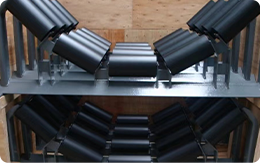 Afrikaans
Afrikaans  Albanian
Albanian  Amharic
Amharic  Arabic
Arabic  Armenian
Armenian  Azerbaijani
Azerbaijani  Basque
Basque  Belarusian
Belarusian  Bengali
Bengali  Bosnian
Bosnian  Bulgarian
Bulgarian  Catalan
Catalan  Cebuano
Cebuano  Corsican
Corsican  Croatian
Croatian  Czech
Czech  Danish
Danish  Dutch
Dutch  English
English  Esperanto
Esperanto  Estonian
Estonian  Finnish
Finnish  French
French  Frisian
Frisian  Galician
Galician  Georgian
Georgian  German
German  Greek
Greek  Gujarati
Gujarati  Haitian Creole
Haitian Creole  hausa
hausa  hawaiian
hawaiian  Hebrew
Hebrew  Hindi
Hindi  Miao
Miao  Hungarian
Hungarian  Icelandic
Icelandic  igbo
igbo  Indonesian
Indonesian  irish
irish  Italian
Italian  Japanese
Japanese  Javanese
Javanese  Kannada
Kannada  kazakh
kazakh  Khmer
Khmer  Rwandese
Rwandese  Korean
Korean  Kurdish
Kurdish  Kyrgyz
Kyrgyz  Lao
Lao  Latin
Latin  Latvian
Latvian  Lithuanian
Lithuanian  Luxembourgish
Luxembourgish  Macedonian
Macedonian  Malgashi
Malgashi  Malay
Malay  Malayalam
Malayalam  Maltese
Maltese  Maori
Maori  Marathi
Marathi  Mongolian
Mongolian  Myanmar
Myanmar  Nepali
Nepali  Norwegian
Norwegian  Norwegian
Norwegian  Occitan
Occitan  Pashto
Pashto  Persian
Persian  Polish
Polish  Portuguese
Portuguese  Punjabi
Punjabi  Romanian
Romanian  Russian
Russian  Samoan
Samoan  Scottish Gaelic
Scottish Gaelic  Serbian
Serbian  Sesotho
Sesotho  Shona
Shona  Sindhi
Sindhi  Sinhala
Sinhala  Slovak
Slovak  Slovenian
Slovenian  Somali
Somali  Spanish
Spanish  Sundanese
Sundanese  Swahili
Swahili  Swedish
Swedish  Tagalog
Tagalog  Tajik
Tajik  Tamil
Tamil  Tatar
Tatar  Telugu
Telugu  Thai
Thai  Turkish
Turkish  Turkmen
Turkmen  Ukrainian
Ukrainian  Urdu
Urdu  Uighur
Uighur  Uzbek
Uzbek  Vietnamese
Vietnamese  Welsh
Welsh  Bantu
Bantu  Yiddish
Yiddish  Yoruba
Yoruba  Zulu
Zulu Understanding the Functionality of Belt Drive Systems Utilizing Idler Pulleys for Enhanced Performance
Belt Drive with Idler Pulley An Overview
Belt drives are widely used mechanical systems that facilitate the transfer of power between rotating shafts. A fundamental component of these systems is the belt pulleys, which can include idler pulleys. Understanding the role of an idler pulley within a belt drive system is crucial for optimizing performance and reliability in various applications, from automotive engines to industrial machinery.
What is a Belt Drive?
A belt drive consists of two or more pulleys linked by a belt, typically made from materials like rubber or reinforced composites. As one pulley rotates, the belt transfers motion to the connected pulley, enabling power transmission without direct contact. Belt drives offer several advantages, including the ability to absorb shock loads, reduce vibrations, and operate quietly compared to gears.
Introduction to Idler Pulleys
An idler pulley is a pulley that does not drive any load but serves to guide the belt and help maintain the tension required for efficient operation. Idler pulleys play a pivotal role in managing the belt’s path, reducing slack, and improving the overall performance of the belt drive system. They ensure that the belt remains aligned and secure, preventing it from slipping or misaligning, which can lead to increased wear and potential failure.
Benefits of Using Idler Pulleys
1. Tension Maintenance One of the primary functions of an idler pulley is to keep the belt under adequate tension. Proper tension not only maximizes power transmission but also prolongs the life of the belt by reducing wear and tear due to slippage.
belt drive with idler pulley

2. Belt Alignment Idler pulleys help maintain proper alignment of the belt. Misalignment can cause uneven wear on the belt and the pulleys, leading to premature failure. By guiding the belt’s path, idler pulleys minimize the risk of misalignment.
3. Flexibility in Design The inclusion of idler pulleys allows for more flexible designs in machinery. By strategically placing idler pulleys, engineers can optimize the layout of the drive system, avoiding obstacles while still achieving efficient power transmission.
4. Load Distribution In complex systems where multiple belts are involved, idler pulleys can help distribute the load evenly among different components. This is crucial for preventing overload on any single belt or pulley, enhancing the system's overall reliability.
Applications in Various Industries
Belt drives with idler pulleys are ubiquitous across multiple industries. In the automotive sector, for example, idler pulleys are often used in engine systems to control timing belts and serpentine belts, ensuring smooth operation of various engine components. In industrial settings, machines such as conveyor systems and manufacturing equipment utilize idler pulleys to enhance performance by maintaining belt tension and alignment.
Conclusion
The belt drive system, including the idler pulley, exemplifies a simple yet effective method for power transmission in a variety of applications. By understanding the importance of idler pulleys, engineers and technicians can design more effective systems that mitigate wear and improve durability. As technology continues to advance, the role of belt drives and idler pulleys will remain integral in improving efficiency and reliability in countless machinery and applications. Whether in automotive, industrial, or everyday tools, the mechanics of belt drives with idler pulleys will continue to play a significant role in ensuring optimal performance.
-
Revolutionizing Conveyor Reliability with Advanced Rubber Lagging PulleysNewsJul.22,2025
-
Powering Precision and Durability with Expert Manufacturers of Conveyor ComponentsNewsJul.22,2025
-
Optimizing Conveyor Systems with Advanced Conveyor AccessoriesNewsJul.22,2025
-
Maximize Conveyor Efficiency with Quality Conveyor Idler PulleysNewsJul.22,2025
-
Future-Proof Your Conveyor System with High-Performance Polyurethane RollerNewsJul.22,2025
-
Driving Efficiency Forward with Quality Idlers and RollersNewsJul.22,2025





























